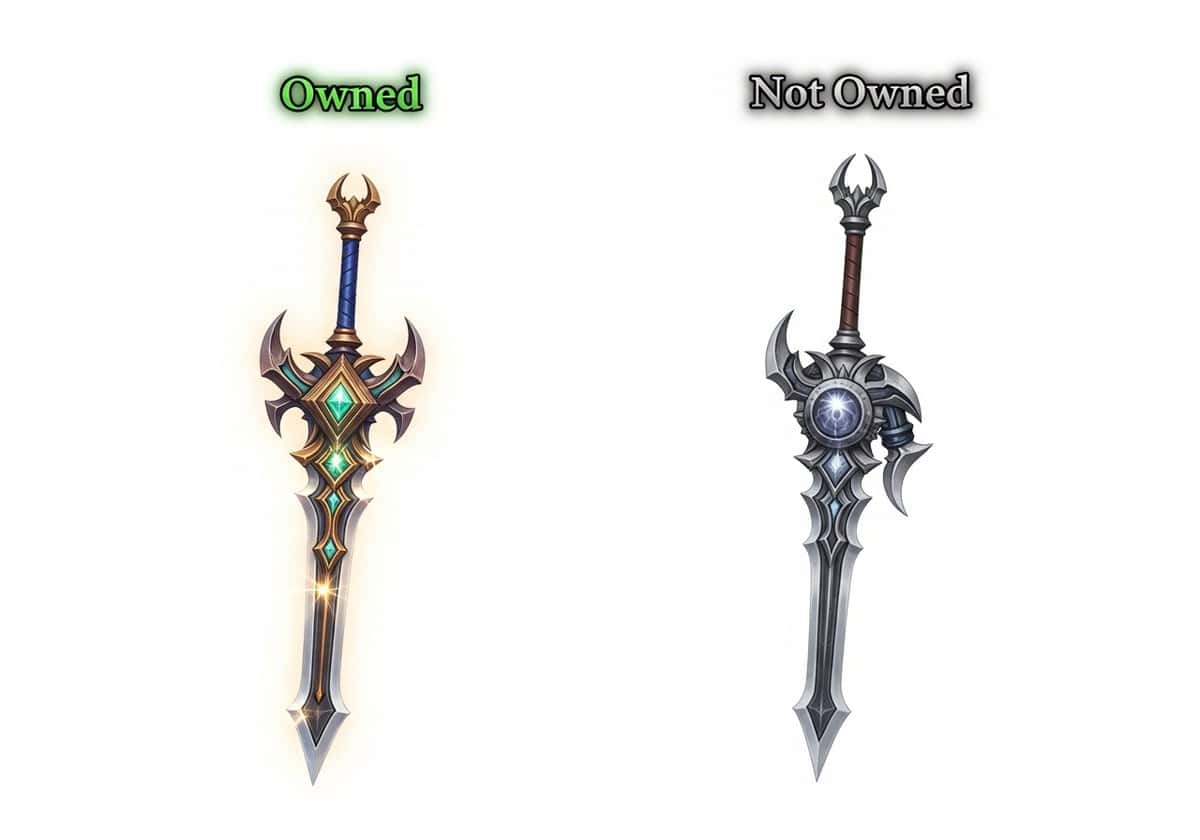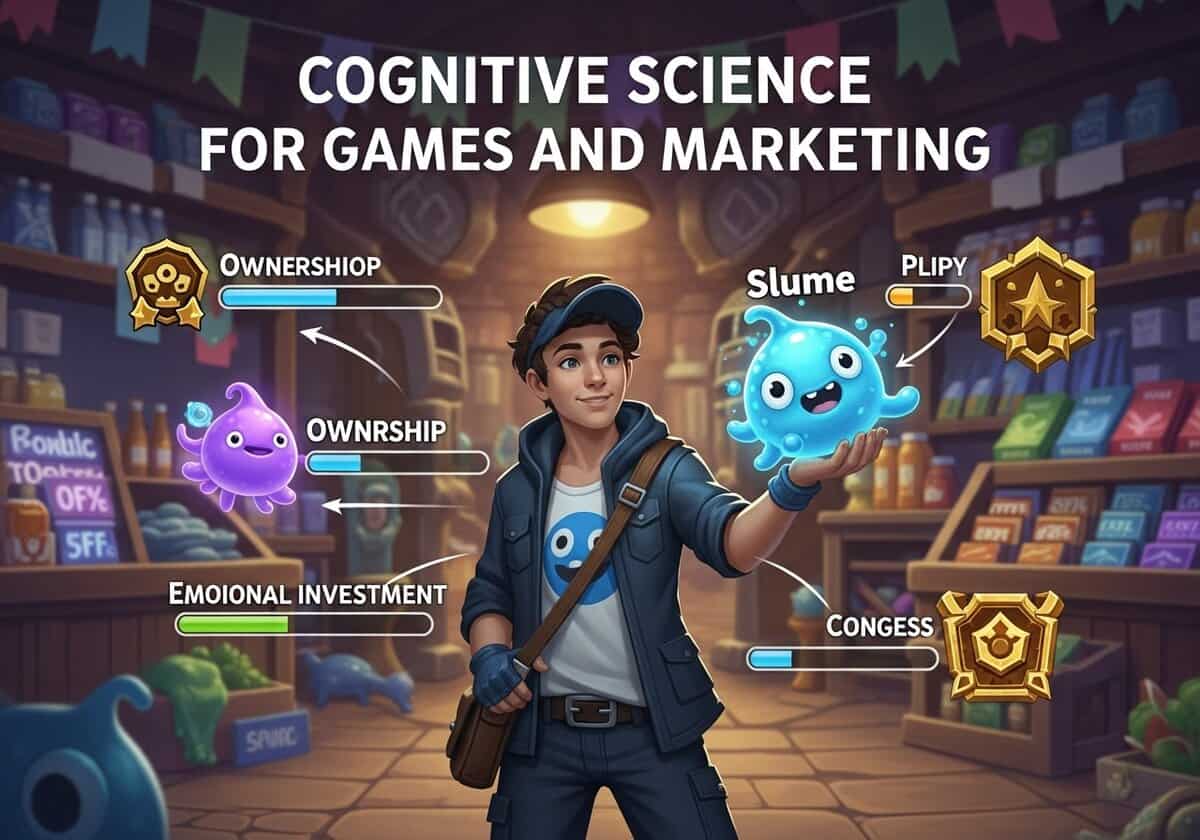
New product designs, innovations, and especially game mechanics are built to tap into fundamental human motivations for competence, autonomy, and social relatedness. By creating systems that generate predictable emotional and behavioral responses, such as the compulsion to complete an unfinished task or the desire to avoid missing a limited-time opportunity, developers can build powerful feedback loops that encourage sustained player involvement and emotional investment.
This article is the 3nd of a 3-parts:
- Data-Driven and Statistical Tricks for Games and Marketing
- Cognitive Science Tricks for Games and Marketing
- More Cognitive Science Tricks for Games and Marketing
It follows the part #1 here:
and the part #2 here:
Part #3: More Psychological and Engagement Tricks

21. Endowment Effect
This cognitive bias causes people to overvalue things that they own. Once a player feels a sense of ownership over an in-game item, they will value it more highly than an identical item they do not own.
Games foster this effect by allowing customization, naming, and improvement of items, creating a personal attachment that makes the player more invested in the game world where their prized possessions exist.
The IT system enables this by providing persistent item databases that store not just the item’s existence but also its customized properties. This can include its name (a string), its color (a hex value), its stats (which are upgraded through player action), and its history (e.g., “Defeated the Lich King”). When the player views the item, the client pulls all this personalized data from the server, reinforcing the item’s unique identity and the player’s ownership of it.
Game application: in a monster-battling game, a player captures a basic “Slime” creature. They spend resources to upgrade it, evolve its appearance, and give it a unique name. A special offer appears in the shop for a much stronger, pre-leveled creature. However, the player is unwilling to replace their personalized, self-raised creature because the endowment effect has made it feel more valuable than the objectively superior new one.
22. Scarcity

Often used in advertisement marketing and websites, scarcity increases perceived value by implying high demand or limited supply. An item is seen as more desirable if it is rare, exclusive, or available for a limited time. This taps into the desire for status and uniqueness. Owning a scarce item signals dedication, luck, or wealth to other players, making it a powerful social signifier and a highly sought-after commodity.
Tip: this tricks combines very well with data-driven tricks seen in part 1
Scarcity is created and managed through server-side controls. For items with probabilistic scarcity (rare drops), the server uses RNG with very low probabilities, as described in intermittent rewards. For items with managed scarcity, the server might be programmed to only allow a certain number to exist in the entire game world (e.g., “Only 100 ‘Swords of the Founder’ will ever be created”). For time-based scarcity, the event system is used to make items available for only a short period.
Game application: an online multiplayer game sells a unique motorcycle skin in its cash shop for one week only, with a message that it will “never be sold again.” Years later, players who own the skin are seen as veterans. The skin’s scarcity has turned it into a status symbol, and new players who see it feel a desire for similar exclusive items.
23. Core Loops
The core loop is a sequence of actions that a player repeats continuously. The psychological power of a well-designed loop is its ability to become intrinsically motivating and habit-forming.

A simple, rewarding loop (e.g., Fight monster -> Get gold -> Use gold to upgrade sword -> Fight stronger monster) provides a constant sense of progress and competence. It is the fundamental gameplay rhythm that players learn and master.
The technical implementation of a core loop involves linking several different game systems together in a cycle. In the example above, the combat system rewards the player with virtual currency, which is stored in the player database. The inventory system allows the player to spend that currency to modify an item’s stats, also saved to the database. The matchmaking or world-spawning system then presents the player with a more difficult challenge, which feeds back into the combat system.
Game application: a mobile action-RPG has a simple core loop. 1) The player enters a short, 30-second dungeon (Action). 2) They collect loot and an experience gem (Reward). 3) They use the loot and gem to slightly improve their character’s stats back in the main menu (Investment). This loop is so fast and rewarding that players can perform it dozens of times in a single session.
24. Gacha Mechanics

Gacha mechanics are an extreme form of intermittent rewards, modeled after capsule-toy vending machines: they tap into the powerful thrill of summoning or opening a pack, where the anticipation of a rare result is a major part of the experience.
The cycle of spending currency, watching an elaborate opening animation, and then seeing the results can be highly compelling, triggering the same psychological responses as gambling.
This system is entirely dependent on a server-side RNG and a database of potential rewards (the “pool”). Each item in the pool is assigned a rarity and a corresponding probability. When a player “pulls,” the server executes a roll and grants the resulting item to their account. Math and statistics are used to publicly display the probabilities (e.g., “5-star character: 1% chance”), which is a legal requirement in many regions, to provide transparency into the statistical model being used.
Game application: in a hero-collection RPG, players spend “Soul Gems” to summon a random hero. The summoning animation is a flashy spectacle of light and energy. Most of the time, a common 3-star hero appears. But the player keeps spending gems, chasing the dopamine rush of the moment when the animation might reveal an ultra-rare 5-star hero, which has a 0.6% probability.
25. Pay to Skip
This monetization strategy leverages a player’s impatience. By creating artificial waiting periods or “grindy” challenges, the game first creates a negative stimulus...
You have read 19% of the article. The rest is for our community. Already a member? Log in
(and also to protect our original content from scraping bots)
Innovation.world community
Login or Register (100% free)
View the rest of this article and all members-only content and tools.
Only real engineers, manufacturers, designers, marketers professionals.
No bot, no hater, no spammer.
































